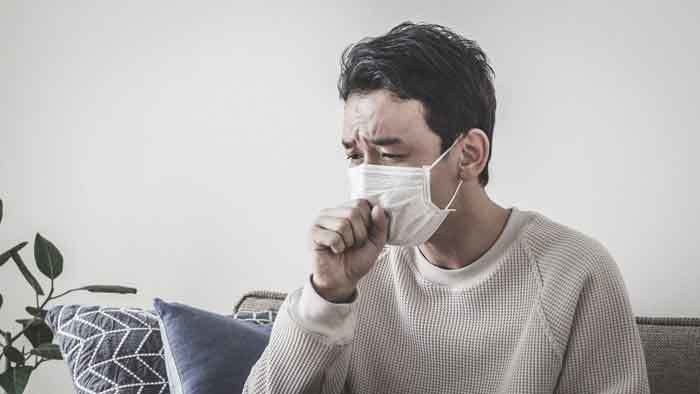How To Remove Formaldehyde From Air? [ANSWERED]

Formaldehyde has long been an established component of many of the house products that we use today. Manufacturers commonly use this as a preservative chemical thanks to its low cost, so there’s no doubt that there’s formaldehyde in your home, too.
You’ll find formaldehyde in pressed wood products, which are used to create pieces of furniture like cupboards, cabinets, dressers, and the like. Building materials also use formaldehyde, and you can find it in particleboard and hardwood plywood paneling. Medium density fiberboard, which is commonly used to top furniture, emits the highest amount of formaldehyde over other pressed wood products.
The paint, varnish, and floor finishes used in your home also contain formaldehyde.
These items emit formaldehyde vapor, which then makes its way into the air that you breathe.
But your furniture isn’t the only thing containing formaldehyde in your home.
More...
It’s also used in other products that you buy, like cosmetics, nail polish, insecticide, tobacco, and even dye.
In fact, formaldehyde is often used as an industrial-grade fertilizer and germicide. Some medical laboratories also use this as a preservative chemical.
So if it’s so commonly found within most of the products that we use, should it still be considered a health concern?
In 1987, the U.S. Environmental Protection Agency (EPA) classified formaldehyde as one of the probable causes of cancer.
Why you should be concerned about the amounts of formaldehyde in your home and in products?

The Occupational Safety and Health Administration (OSHA) has conducted tests to find the hazards of exposure to formaldehyde.
Workers who are regularly exposed to formaldehyde due to the nature of their jobs, like carpentry industry workers and embalmers, are found to have an increased risk of leukemia and brain cancer compared with people whose jobs don’t regularly expose them to formaldehyde.
For people suffering from cat allergies, you may find your eyes watering or you may start sneezing whenever you’re in the vicinity of one.
How do I know if my house contains formaldehyde?

Thanks to the commonplace usage of formaldehyde in the carpentry industry, it’s nearly impossible for you to be living in a house that doesn’t contain formaldehyde.
However, it is possible to be living in a house with high levels of formaldehyde gas, so you should still watch out for these overly high levels inside your home.
How can you do that?
A lot of companies will try to sell formaldehyde detectors, but these things aren’t actually detecting solely formaldehyde – while these work, they’ll also go off at just about any other chemical gas that they detect! This can have you panicking for nothing.
So how should you detect high levels of formaldehyde?
The simplest method is to simply use your nose. Formaldehyde is described a strong-smelling gas, so if you find that entering your home bombards you with a chemical reek that hurts your nose, then it could very well be formaldehyde.
How To Remove Formaldehyde From Air?

The symptoms of exposure are similar to symptoms of those who suffer from a cold or a flu. These include coughing, sneezing, and watery eyes, but the overexposure could also lead to an allergic reaction, or even difficulty breathing.
Some have reported experiencing a burning sensation in their eyes, nose, and throat, after being exposed to an area with high levels of formaldehyde emissions.
1. Reduce exposure to formaldehyde
To avoid these effects, you should minimize your exposure to formaldehyde, starting with your home environment:
a) No smoking

First, you should establish a no smoking policy inside your house, because tobacco products contain formaldehyde.
b) Do not leave engines running

If you have gas-powered machinery at home, such as snow plows or lawnmowers, or even a car, make sure that the engine is not left running while idle. The gas that these machines emit contains formaldehyde, along with a bunch of other irritants that you wouldn’t want family to be exposed to.
c) Close garage doors

You should also take care to keep your garage door closed at all times, so that even if your car is running in your garage, the emissions aren’t making their way into your home.
d) Choose solid wood furniture instead

Buying solid wood furniture instead of ones made of particleboard can also decrease formaldehyde emissions in your house, since solid wood doesn’t use formaldehyde in its production. Although solid wood furniture is more expensive than its cheaper, mass-produced alternatives, you can be assured that these items don’t emit formaldehyde vapor.
If you’re low on cash or you want to save up and avoid buying more expensive pieces of furniture, there are low-formaldehyde options that you could go for when shopping to furnish your home. As the label suggests, these products aren’t completely void of formaldehyde, but they do have significantly lower emissions.
Look for the labels U.L.E.F. (ultra-low-emitting formaldehyde) and N.A.F. (no added formaldehyde), or ask the nearest sales attendant to assist you.
You could also let newly bought furniture to “air out” before you take them into your home. Unpack and uncover the piece of furniture fully and let it stay in your lawn for an hour to allow the initial wave of formaldehyde emissions to air out into the outdoor air, and keep away from your home.
2. Reduce formaldehyde emissions already present in your home
If you’re worried that your home already has a buildup of formaldehyde vapors, there are still some steps you can take to reduce the amounts of it from your indoor environment.
a) Ventilate

The easiest way to reduce formaldehyde vapor already present in your indoor air is to open a window, of course! Doing this allows the gas to leave your home, and even invites cleaner, fresher air indoors.
b) Use an air purifier

A better way to reduce formaldehyde emissions from the air in your house is to use an air purifier.
Contrary to what’s advertised, a HEPA filter won’t be of much help, because it doesn’t filter gases. Activated carbon filters, however, are heavy enough to catch dangerous gases and keep them from going on to circulate inside your home.
Using an activated carbon filter is the best way to reduce formaldehyde in your home, since it actively catches the gas. Specifically for formaldehyde, we'd suggest going for this one.
